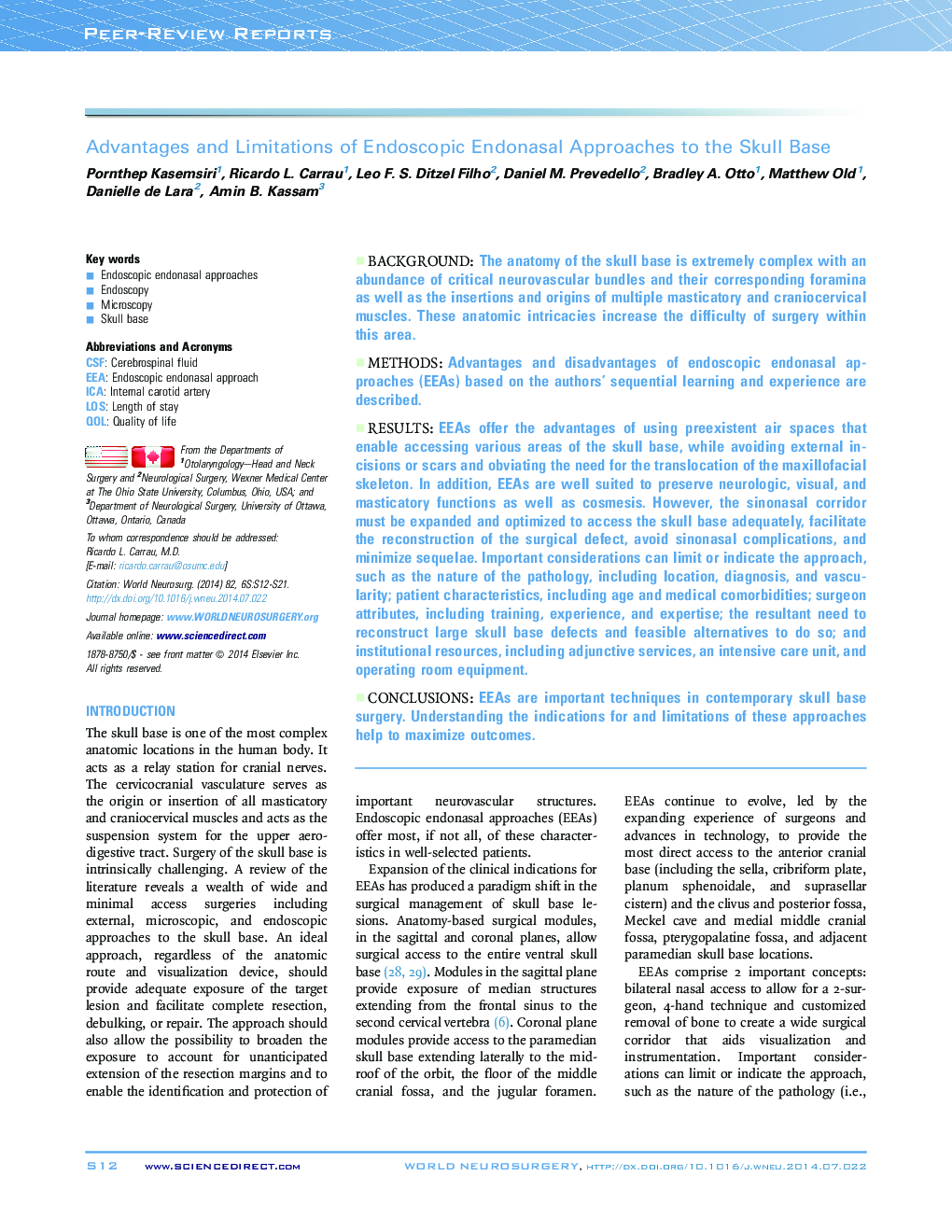| Article ID | Journal | Published Year | Pages | File Type |
|---|---|---|---|---|
| 3095372 | World Neurosurgery | 2014 | 10 Pages |
BackgroundThe anatomy of the skull base is extremely complex with an abundance of critical neurovascular bundles and their corresponding foramina as well as the insertions and origins of multiple masticatory and craniocervical muscles. These anatomic intricacies increase the difficulty of surgery within this area.MethodsAdvantages and disadvantages of endoscopic endonasal approaches (EEAs) based on the authors' sequential learning and experience are described.ResultsEEAs offer the advantages of using preexistent air spaces that enable accessing various areas of the skull base, while avoiding external incisions or scars and obviating the need for the translocation of the maxillofacial skeleton. In addition, EEAs are well suited to preserve neurologic, visual, and masticatory functions as well as cosmesis. However, the sinonasal corridor must be expanded and optimized to access the skull base adequately, facilitate the reconstruction of the surgical defect, avoid sinonasal complications, and minimize sequelae. Important considerations can limit or indicate the approach, such as the nature of the pathology, including location, diagnosis, and vascularity; patient characteristics, including age and medical comorbidities; surgeon attributes, including training, experience, and expertise; the resultant need to reconstruct large skull base defects and feasible alternatives to do so; and institutional resources, including adjunctive services, an intensive care unit, and operating room equipment.ConclusionsEEAs are important techniques in contemporary skull base surgery. Understanding the indications for and limitations of these approaches help to maximize outcomes.
